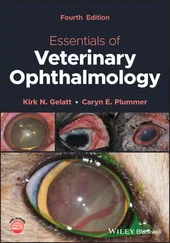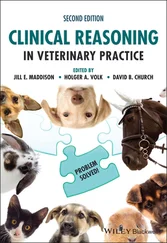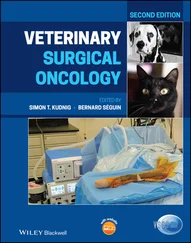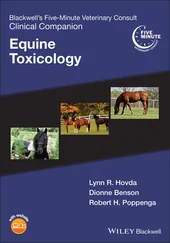Veterinary Clinical Skills
Здесь есть возможность читать онлайн «Veterinary Clinical Skills» — ознакомительный отрывок электронной книги совершенно бесплатно, а после прочтения отрывка купить полную версию. В некоторых случаях можно слушать аудио, скачать через торрент в формате fb2 и присутствует краткое содержание. Жанр: unrecognised, на английском языке. Описание произведения, (предисловие) а так же отзывы посетителей доступны на портале библиотеки ЛибКат.
- Название:Veterinary Clinical Skills
- Автор:
- Жанр:
- Год:неизвестен
- ISBN:нет данных
- Рейтинг книги:5 / 5. Голосов: 1
-
Избранное:Добавить в избранное
- Отзывы:
-
Ваша оценка:
- 100
- 1
- 2
- 3
- 4
- 5
Veterinary Clinical Skills: краткое содержание, описание и аннотация
Предлагаем к чтению аннотацию, описание, краткое содержание или предисловие (зависит от того, что написал сам автор книги «Veterinary Clinical Skills»). Если вы не нашли необходимую информацию о книге — напишите в комментариях, мы постараемся отыскать её.
Provides instructors and students with clear guidance on best practices for clinical skills education Veterinary Clinical Skills
Veterinary Clinical Skills
Veterinary Clinical Skills — читать онлайн ознакомительный отрывок
Ниже представлен текст книги, разбитый по страницам. Система сохранения места последней прочитанной страницы, позволяет с удобством читать онлайн бесплатно книгу «Veterinary Clinical Skills», без необходимости каждый раз заново искать на чём Вы остановились. Поставьте закладку, и сможете в любой момент перейти на страницу, на которой закончили чтение.
Интервал:
Закладка:
Lastly, Duijn et al. (2020) used entrustable professional activities (EPAs) to evaluate graduate readiness for practice. An EPA is defined as “an essential task of a discipline (profession, specialty or subspecialty) that an individual can be trusted to perform without direct supervision in a given health care context once sufficient competence has been demonstrated” (ten Cate, 2005). Duijn et al. (2020) identified five EPAs they believed were core educational objectives for veterinary curricula and surveyed new graduates regarding their readiness to perform these EPAs, including the degree of supervision they required. They found that, on average, it took graduates approximately six months until they felt ready to execute all five EPAs with distant supervision. Only after 10 months did participants feel fully competent to execute EPAs unsupervised. The authors noted that these results suggest the expectations of graduate performance may need to be nuanced but also the importance of adequate preparation of veterinarians during their education and the importance of guidance during early career to foster a successful transition from veterinary school to clinical practice. Clinical coaching of veterinary nursing students in practice is well established in certain parts of the world, but this could also be extended to veterinary nurses at the beginning of their careers to help navigating the new work environment and adapt to new situations (Kerrigan, 2018).
Accreditation Needs
There are a number of veterinary accrediting agencies worldwide, including the American Veterinary Medical Association's Council on Education (AVMA COE), the Royal College of Veterinary Surgeons (RCVS), European Association of Establishments for Veterinary Education (EAEVE), and the Australasian Veterinary Board Council (AVBC). There is significant harmonization of accreditation standards among these organizations, with each recognizing the importance of clinical skills development within the curriculum. More specifically, Standard 9 (Curriculum) of the AVMA COE requirements states the “Curriculum must provide… instruction in both the theory and practice of medicine and surgery applicable to a broad range of species. The instruction must include principles and hands‐on experiences in physical and laboratory diagnostic method s and interpretation (including diagnostic imaging, diagnostic pathology, and necropsy), disease prevention, biosecurity, therapeutic intervention (including surgery ), and patient management and care (including intensive care, emergency medicine and isolation procedures) involving clinical diseases of individual animals and populations” (AVMA, 2017).
Additionally, Standard 11 (Outcomes Assessment) states “The college must have processes in place whereby students are observed and assessed formatively and summatively” on nine competencies, the majority of which include clinical skills requirements (e.g., comprehensive patient diagnosis, anesthesia, basic surgical skills, basic medicine skills, emergency and intensive care management, communication skills) (AVMA, 2017). The standard also requires colleges and schools to provide evidence of timely documentation to assure accuracy of the assessment for having attained these competencies.
Step 2: Determining and Prioritizing Content
Before a decision can be made regarding which clinical skills can, and should, be included in the curriculum, there must be a common understanding among the people involved in its implementation as to what constitutes a clinical skill in their context. For example, one study used a Delphi process and showed a marked variation between participants (British doctors involved in teaching) as to what this term meant, ranging from simple physical examination skills to include other diagnostic, communication, and practical skills (Michels et al., 2012). They concluded that acquiring clinical skills involved three components: learning how to perform certain movements (procedural knowledge), why one should do so (underlying basic and medical science knowledge or declarative knowledge), and what the findings might mean (clinical reasoning); and that these three components should be taken into account during instructional design.
Once a decision has been made as to what constitutes the range of clinical skills required for veterinary and/or veterinary nursing students to be taught in the program, the specific skills should be identified and prioritized. This may be easier said than done, as although clinical skill training is an integral part of all veterinary curricula, the specific skills that are required and how they are taught has been the subject of much debate (Malone, 2019). This is particularly the case when veterinary programs become overloaded as more and more content is added, requiring specific decisions to be made regarding the clinical skills content, as well as when and how they are taught (Malone, 2019).
Generation of a prioritized, Day‐One skills list will help focus both program and student efforts on core skills, with potential additional lists that may be taught to a smaller cohort of students for colleges or schools with a tracking curriculum. These lists could be adopted from those published in the literature, and potentially modified by local practitioner input to account for regional differences (Greenfield et al., 1997). Published skills lists for veterinary students exist for general Day‐One practice (Greenfield et al., 1997; Doucet and Vrins, 2009; Rush et al., 2011; Schull et al., 2011; Read and Hecker, 2013; Dilly et al., 2014; May, 2015; Kreisler et al., 2019; Malone, 2019), a variety of career paths, including those focused on small animals (Clark et al., 2002; Greenfield et al., 2004; Greenfield et al., 2005; O'Neil et al., 2014), horses (Hubbell et al., 2008; Christensen and Danielsen, 2016), and cattle (Morin et al., 2002a; Morin et al., 2002b; Miller et al., 2004; Luby et al., 2013), as well as lists focused on specific fields such as surgery (Johnson et al., 1993; Bowlt et al., 2011; Hill et al., 2012; Smeak et al., 2012; Schnabel et al., 2013; Carroll et al., 2016; Zeugschmidt et al., 2016; Cosford et al., 2019), dentistry (Thomson et al., 2019), or theriogenology (Root Kustritz et al., 2006). Additional resources may include those skills required by accrediting agencies (e.g. the AVMA COE's 9 clinical competencies), internal surveys of faculty, and Day‐One skills lists shared by other colleges (Morin et al., 2020). For veterinary nursing students, Day‐One competencies lists have been published by the Royal College of Veterinary Surgeons, the Veterinary Nursing Council of Australia, and the South African Veterinary Council (RCVS 2015; VNCA 2019; SAVC 2020).
Care must be taken to prioritize these lists, as they can quickly become exhaustive, and thereby both unattainable and confusing for the student. For example, an informal survey of eight US veterinary colleges in 2009 generated a list of over 900 different, individual clinical skills, of which approximately three quarters were considered core by college faculty, but only 105 were shared by half or more of the colleges (Lizette Hardie, personal communication). Consideration, therefore, should be given to those skills considered essential for a Day‐One veterinarian versus those that may be better learnt or mastered by a subset of students, or after graduation, for example in clinical practice or in continuing education programs (Malone, 2019; Duijn et al., 2020). This consideration should also take into account those skills that may be life‐saving if done correctly, and those that might be life‐endangering if done incorrectly (Malone, 2019). In this context, a short list of crucial skills could be valuable and could ensure we are “teaching to the common uncommonly well” (Henry J. Heinz), rather than providing exposure but not necessarily competence (Malone, 2019).
Читать дальшеИнтервал:
Закладка:
Похожие книги на «Veterinary Clinical Skills»
Представляем Вашему вниманию похожие книги на «Veterinary Clinical Skills» списком для выбора. Мы отобрали схожую по названию и смыслу литературу в надежде предоставить читателям больше вариантов отыскать новые, интересные, ещё непрочитанные произведения.
Обсуждение, отзывы о книге «Veterinary Clinical Skills» и просто собственные мнения читателей. Оставьте ваши комментарии, напишите, что Вы думаете о произведении, его смысле или главных героях. Укажите что конкретно понравилось, а что нет, и почему Вы так считаете.












